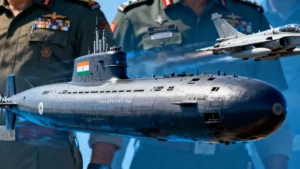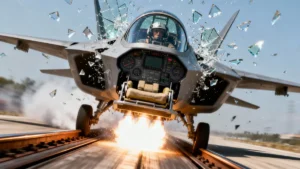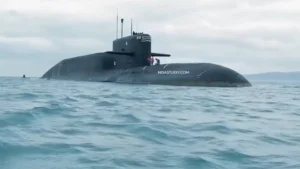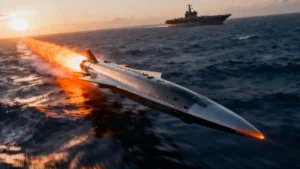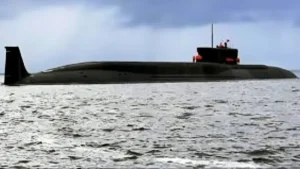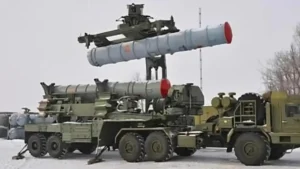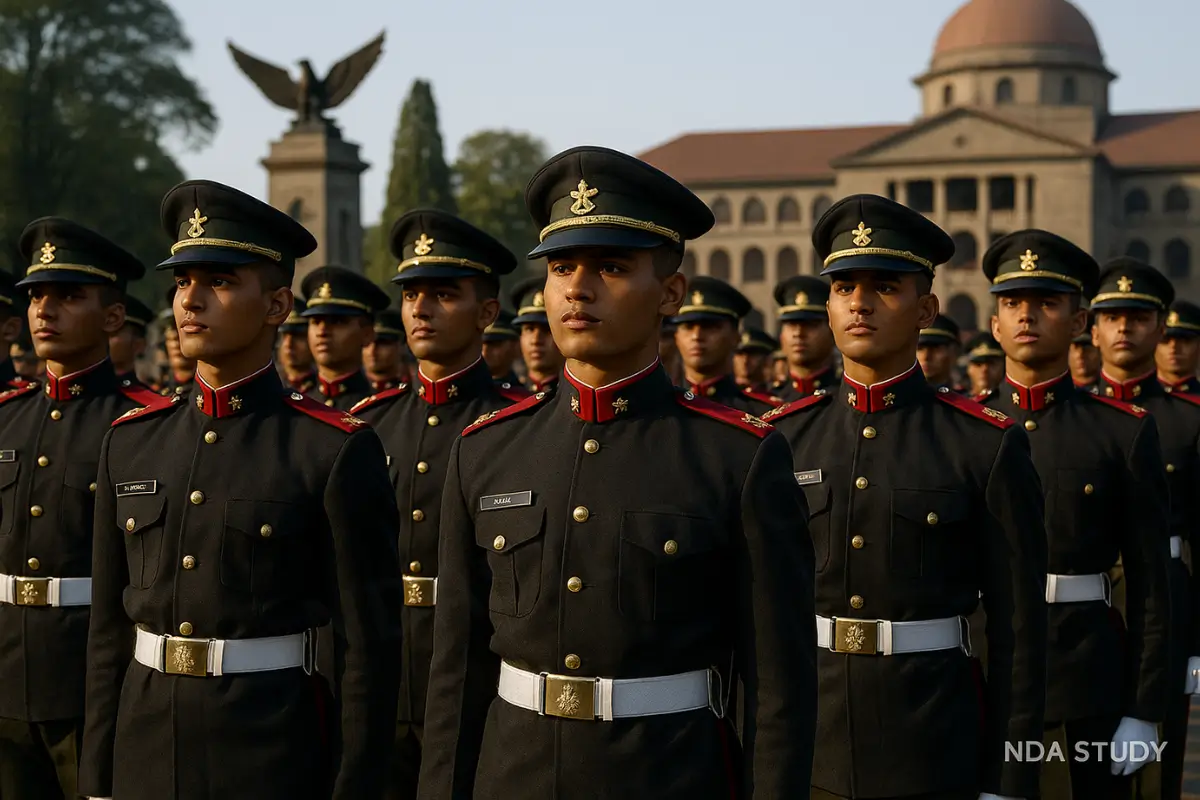In the first half of 2025, the Indian Air Force (IAF) experienced a concerning increase in accidents involving its ageing fleet of Jaguar fighter jets. The most recent tragedy occurred on July 9, when an IAF Jaguar fighter jet crashed in Rajasthan near Churu district, resulting in the deaths of both pilots. This incident has shaken the nation and raised serious concerns about the safety of these vintage warplanes. This crash is not an isolated event. Just a few months earlier, in April 2025, another Jaguar jet crashed in Jamnagar, Gujarat, leading to one pilot’s death while the other narrowly escaped by ejecting safely.
These repeated incidents underscore significant safety issues with the Jaguar aircraft and highlight the urgent need for a comprehensive investigation into the crashes. Despite being introduced in the late 1970s, the Jaguar jets remain vital to India’s defence, particularly for tactical and nuclear strike missions. However, their outdated technology—such as the risky manual ejection system—puts pilots’ lives at risk. As the IAF confronts these challenges, there are increasing calls for accelerated modernisation of its fleet. This article explores the legacy, risks, and future of India’s vintage Jaguars, combining technical insights, expert opinions, and eyewitness accounts to elucidate what these crashes mean for India’s air defence and the courageous pilots who operate these jets.
IAF Jaguar Fighter Jet Crash in Rajasthan: Details
On July 9, 2025, the IAF Jaguar Fighter Jet Crash in Rajasthan shook the quiet agricultural fields near Bhanuda village in Churu district, leaving behind a trail of devastation and heartbreak. Eyewitnesses recall a terrifying scene: the twin-engine Jaguar jet suddenly losing stability mid-air before crashing and bursting into flames around 1:25 pm, sending thick black smoke billowing across the sky, visible for miles. Local villagers rushed to the site, only to find scattered debris and human remains, a grim testament to the fatal impact that claimed the lives of both pilots onboard. Despite their desperate efforts, the intense fire made rescue impossible.
| Aspect | Details |
|---|---|
| Date & Time of Crash | July 9, 2025, around 1:25 PM |
| Location | Agricultural field near Bhanuda village, Churu district, Rajasthan |
| Aircraft | Indian Air Force SEPECAT Jaguar twin-seater trainer jet |
| Mission Type | Routine training sortie |
| Pilots Onboard | Two (Squadron Leader Lokendra Singh Sindhu and Flight Lieutenant Rishi Raj Singh) |
| Casualties | Both pilots killed |
| Crash Circumstances | Aircraft lost stability mid-air, crashed and burst into flames; eyewitnesses reported pilot tried to steer away from village to avoid civilian casualties |
| Origin of Flight | Took off from Suratgarh Air Base |
| Significance | Third Jaguar crash in 2025; raises concerns about aging Jaguar fleet and pilot safety |
| IAF Response | Court of inquiry ordered; IAF expressed condolences and support to families |
| Local Impact | No civilian casualties or property damage reported; rescue teams and police responded promptly |
| Previous 2025 Crashes | March crash near Ambala (pilot ejected safely); April crash near Jamnagar (one pilot died) |
The local community is mourning the loss of two brave pilots, whose sacrifice underscores the dangers associated with operating India's ageing fighter jets. As the investigation unfolds, the nation closely monitors the situation, demanding answers and swift action to ensure the safety of its airspace and those who defend it.
Eyewitness accounts & Local Impacts
Eyewitnesses from the Churu district vividly recall the terrifying moment when a twin-seater Jaguar jet suddenly spiralled out of control and crashed in an open field near Bhanuda village. One local, Rajdeep, described seeing a massive plume of black smoke rising into the sky, followed by the horrifying sight of scattered debris and, tragically, parts of the pilot’s body strewn across the crash site. Amidst the chaos, rescuers found a pilot’s diary, which was handed over to the authorities, adding a poignant human touch to the tragedy.
Villagers also spoke of the pilot’s heroic final act—steering the failing aircraft away from homes and farmland to avoid civilian casualties. This sacrifice cost him his life but saved many on the ground. The crash site quickly became crowded with locals, police, and rescue teams working tirelessly to recover the bodies of both pilots and secure the area.
This devastating accident marks the third Jaguar crash in 2025, following a fatal incident in April near Jamnagar, Gujarat, where one pilot died and the other survived by ejecting safely. These repeated tragedies have intensified concerns about the safety of Jaguar aircraft and highlighted the urgent need for a thorough investigation into the crashes, as well as accelerated modernisation of the Indian Air Force fleet. The human toll and emotional impact on the local community emphasise the risks faced by IAF pilots flying these vintage jets, making this situation not just a technical failure, but a call for urgent reforms to protect India’s air defence heroes.
Technical Profile of the Jaguar Fighter Jet
The recent crash of an IAF Jaguar fighter jet in Rajasthan has highlighted concerns about the SEPECAT Jaguar, an important but ageing aircraft in the Indian Air Force. Developed in the 1960s through a partnership between Britain and France, the Jaguar was first meant to be a jet trainer but quickly became a supersonic attack aircraft used for close air support, reconnaissance, and tactical nuclear strikes. It was made by SEPECAT, a cooperation between Breguet and the British Aircraft Corporation, and it first entered service in the 1970s, seeing combat in various conflicts worldwide.
In India, the Jaguar has been crucial to the IAF’s strike capabilities since the early 1980s. Its ability to fly at low altitudes makes it hard for enemy radar to spot. This feature is vital for tactical missions and for nuclear strike readiness, forming an important part of India’s security strategy.
| Specification | Details |
|---|---|
| Aircraft Type | Twin-engine supersonic fighter-bomber |
| Origin | SEPECAT Jaguar – British-French collaboration (1960s) |
| Role in IAF | Low-level penetration strike, tactical nuclear strike capability |
| Crew | 1 (single-seat) or 2 (trainer version) |
| Length | 16.83 meters (55 ft 3 in) |
| Wingspan | 8.69 meters (28 ft 6 in) |
| Height | 4.89 meters (16 ft 1 in) |
| Wing Area | 24.18 m² (260.3 sq ft) |
| Empty Weight | Approximately 7,000 kg (15,432 lbs) |
| Max Takeoff Weight | 15,700 kg (34,613 lbs) with external stores |
| Powerplant | 2 × Rolls-Royce Turbomeca Adour Mk.102 afterburning turbofan engines, 22.75 kN thrust each dry |
| Maximum Speed | Mach 1.1 (1,350 km/h) at sea level; Mach 1.6 (1,699 km/h) at 11,000 m |
| Combat Range | 815 km (hi-lo-hi profile, internal fuel) |
| Ferry Range | 1,902 km with full internal and external tanks |
| Service Ceiling | 14,000 meters (46,000 ft) |
| Armament Capacity | Up to 4,500 kg (10,000 lbs) on 7 hardpoints |
| Guns | 2 × 30 mm DEFA cannons, 150 rounds per gun |
| Missiles & Rockets | Air-to-air (AIM-9 Sidewinder, ASRAAM), air-to-surface (Rampage, AS-30L), anti-ship (Harpoon, Sea Eagle) |
| Bombs | Unguided, laser-guided, and nuclear bombs (WE177A) |
| Avionics | EL/M-2052 AESA radar, ATLIS II targeting pod, ECM pod, reconnaissance pods |
| Ejection System | Manual ejection seat (pilot must activate manually) |
| Notable Features | Designed for low-level, high-speed penetration; critical role in India’s nuclear strike capability |
| Operational Since | Early 1980s with the Indian Air Force |
| Current Status | An ageing fleet with ongoing modernisation efforts, subject to safety concerns due to vintage systems |
The Jaguar is powered by two Rolls-Royce Turbomeca Adour turbofan engines, allowing it to fly about 850 kilometres without refuelling. However, its technology and safety systems are outdated. For example, the Jaguar has a manual ejection system, which means pilots have to activate it themselves in emergencies. This has raised safety concerns, especially following recent crashes in Rajasthan and Jamnagar in 2025. This manual system is less safe compared to modern planes that have automatic ejection seats.
Despite its age and safety issues, India continues to use the Jaguar fleet because it is cost-effective and plays a strategic role. Its unique abilities, especially in low-level strikes and nuclear delivery, are hard to replace. However, recent accidents have increased calls for upgrades and faster retirement of the aircraft. The Jaguar represents both India’s proud defence history and the urgent need to update its military capabilities to meet new challenges.
Safety Concerns & Crash Pattern Analysis
The IAF Jaguar fighter jet crashed in Rajasthan on July 9, 2025. This is the third accident involving the Jaguar fleet this year, raising serious concerns about the safety of these old aircraft. Earlier in March, a Jaguar crashed near Ambala, Haryana. The pilot ejected safely after a system failure. In April, another crash near Jamnagar, Gujarat, resulted in the death of Squadron Leader Siddharth Yadav. He made sure his co-pilot ejected safely during a technical issue. These accidents show that the ageing Jaguar fleet has growing weaknesses and highlight the need for a complete investigation into these crashes.
One major safety issue is the Jaguar’s manual ejection system. This system requires pilots to activate their ejection seats themselves in emergencies. Unlike newer jets that have automatic ejections, this manual system can be deadly if pilots are unable to act due to injury or confusion. Technical problems related to old avionics, engines, and fatigue in the airframe make the situation even riskier.
Also Read:
Pakistan Begs US for TPS-77 Radars After Indian Airstrikes Exposed Air Defense Weakness
China’s FTC-2000G Fighter Shot Down in Myanmar: Shockwaves for India’s Security and Northeast
India-US 10-Year Defence Pact 2025: A Game-Changer for Indian Security, Industry, and Youth
EX-PAF Chief Claims Strikes on 34 IAF Bases, Faces Online Mockery
INS Tamal Commissioning Ceremony 2025: What Twist & surpeise to Expect
The Indian Air Force also struggles with a shortage of experienced pilots and the heavy maintenance demands of these vintage jets. Each hour of flight time requires about 20 hours of maintenance, which puts a strain on resources and raises the chances of technical failures. These factors—manual ejection issues, ageing systems, pilot shortages, and maintenance challenges—show that the IAF needs to modernise its fleet urgently. The recent crashes not only endanger pilot safety but also affect the IAF’s readiness and ability to deter threats, marking a critical point for India’s air defence future.
Strategic Importance & Operational Impact
The IAF Jaguar Fighter Jet crash in Rajasthan has shown how important yet vulnerable the Jaguar fleet is for India’s defence. For over forty years, the Jaguar, known as ‘Shamsher’ (Sword of Justice), has been a key part of India’s nuclear defence and ability to carry out deep strikes. Its ability to fly low and avoid radar makes it essential for tactical missions. However, a series of crashes in 2025, including ones in Ambala, Jamnagar, and Rajasthan, have raised concerns about readiness and pilot safety. The ageing airframes and manual ejection system add to these worries.
These accidents highlight a challenging issue: India needs the ageing Jaguar fleet for its security, but it also needs to modernise. Delays in programs like HAL Tejas Mk2 and Multi-Role Fighter Aircraft procurement have forced the IAF to keep Jaguars in service longer, putting pilots at greater risk. The recent crashes remind us that modernisation is crucial not only for technology but also for safeguarding the lives of those who protect the nation’s airspace.
Future Outlook & Modernisation Plans
The Indian Air Force (IAF) is set to retire its ageing Jaguar aircraft, starting between 2027 and 2028 and completing the phase-out by 2035 to 2040. Despite the Jaguar’s effectiveness in low-level attacks and nuclear missions, its age and recent accidents make replacement urgent. The IAF is focusing on the HAL Tejas program, especially the Mk1A and MkII versions, to gradually take over the Jaguar’s roles. However, budget limits and production delays have slowed this transition. Maintaining the ageing fleet is increasingly difficult due to a lack of spare parts and high maintenance costs, raising operational risks.
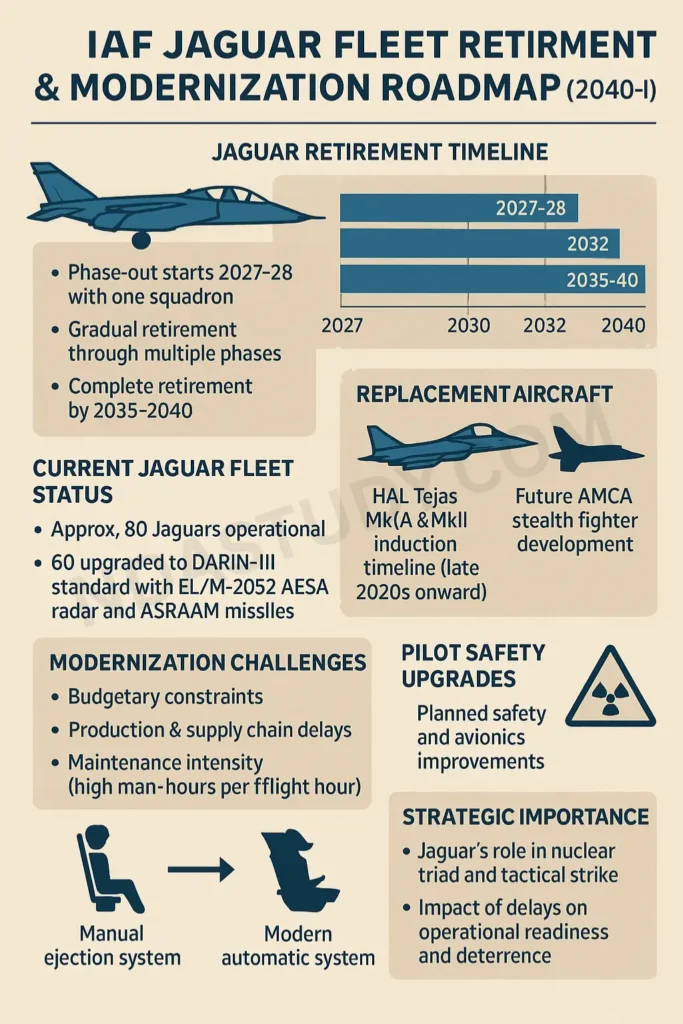
New options like the Tejas MkII, with a more powerful engine and modern technology, promise better strike capabilities. Future aircraft, like the Advanced Medium Combat Aircraft (AMCA), will enhance India’s air power with stealth features. Ensuring pilot safety is a top priority, especially after recent crashes revealed issues with the Jaguar’s ejection system. Upgrading safety measures and speeding up aircraft replacements are vital for protecting pilots and maintaining readiness. The IAF aims to balance its current capabilities with next-generation technologies to secure India’s skies well into the future.
Expert Opinions & Analysis
Retired Indian Air Force pilots and defence analysts have raised serious concerns following the recent crash of an IAF Jaguar fighter jet in Rajasthan, highlighting the urgent need to address safety and modernisation challenges. Group Captain (Retd.) Ramesh Kumar emphasised, “The Jaguar’s manual ejection system is outdated and poses significant risks. Pilots must physically pull the ejection handle, which is nearly impossible if they are unconscious or disoriented during emergencies.” This limitation has been a critical factor in several crashes this year, underscoring the aircraft’s design flaws due to ageing.
Aviation expert Dr. Anjali Mehta noted, “While the Jaguar has served as a backbone of India’s tactical and nuclear strike capability, the recent spate of accidents in 2025 highlights systemic issues. The IAF must accelerate the induction of modern jets like the HAL Tejas MkII and prioritise upgrades to pilot safety.” Defence strategist Col. (Retd.) Vikram Singh added, “Repeated crashes affect pilot morale and operational readiness. The IAF needs comprehensive policy reforms that focus on enhanced training, maintenance, and faster fleet modernisation.
FAQs on IAF Jaguar Fighter Jet Crash in Rajasthan
Why is the Jaguar still flying in the IAF?
The Jaguar remains operational in the Indian Air Force due to its unique role in low-level penetration and nuclear strike missions, capabilities not fully matched by newer aircraft yet. Although inducted in 1979, delays in the delivery of modern jets like the HAL Tejas Mk2, Rafale, and Multi-Role Fighter Aircraft have forced the IAF to extend the Jaguar’s service life. Additionally, the Jaguar fleet is cost-effective to operate and continues to fulfil critical strategic roles despite its vintage status.
What caused the recent Jaguar crashes?
Preliminary investigations into the 2025 crashes—including the latest in Rajasthan—point to technical malfunctions such as engine failure and system faults. The vintage nature of the aircraft, combined with ageing avionics and mechanical components, has increased the risk of failures. The manual ejection system’s limitations have also contributed to pilot fatalities, as it requires conscious activation, which may not be possible during sudden emergencies
How safe is the manual ejection system?
The Jaguar’s manual ejection system is considered outdated and less safe compared to modern automatic ejection seats found in newer fighter jets. Pilots must physically pull the ejection handle to escape, which can be impossible if they are unconscious or incapacitated. This safety gap has been a critical factor in recent fatal crashes, underscoring the urgent need for upgraded safety mechanisms.
What are the IAF’s plans for fleet modernisation?
The IAF plans to phase out the Jaguar fleet gradually, starting around 2027-2028, with complete retirement expected by 2035-2040. The HAL Tejas Mk1A and MkII variants are set to replace Jaguars, offering advanced avionics, better engines, and improved safety features. However, budgetary constraints and production delays have slowed this transition, highlighting the need to accelerate modernisation to ensure pilot safety and operational readiness.
”Experts recommend urgent improvements in safety protocols, including upgrading ejection systems and maintenance practices. They stress that it is vital to balance operational demands with pilot safety to sustain India’s air defence strength. These insights indicate that the incidents involving Jaguar crashes in 2025 are symptomatic of broader challenges. Swift policy action and modernisation are essential to protect pilots and maintain India’s strategic air power.
Author’s Word: Takeaways & What’s Next
The recent IAF Jaguar Fighter Jet Crash in Rajasthan is a tragic reminder of the high human cost behind India’s ageing fighter fleet. These accidents highlight urgent safety concerns, especially with the Jaguar’s manual ejection system, and the pressing need for swift IAF fleet modernisation. Beyond the technical and strategic implications, we must remember the brave pilots who sacrificed their lives defending our skies—their families deserve our deepest respect and support.
This moment calls for immediate reforms in pilot safety protocols, maintenance practices, and accelerated induction of modern aircraft to replace the vintage Jaguars. As investigations continue, it’s vital for readers to stay informed and share any eyewitness information that can aid authorities in uncovering the full story.
Together, by raising awareness and supporting reforms, we can honour the fallen heroes and help build a safer, stronger future for India’s air defence. Stay tuned for ongoing updates on this critical issue.
Stay Tuned & Stay Connected!

